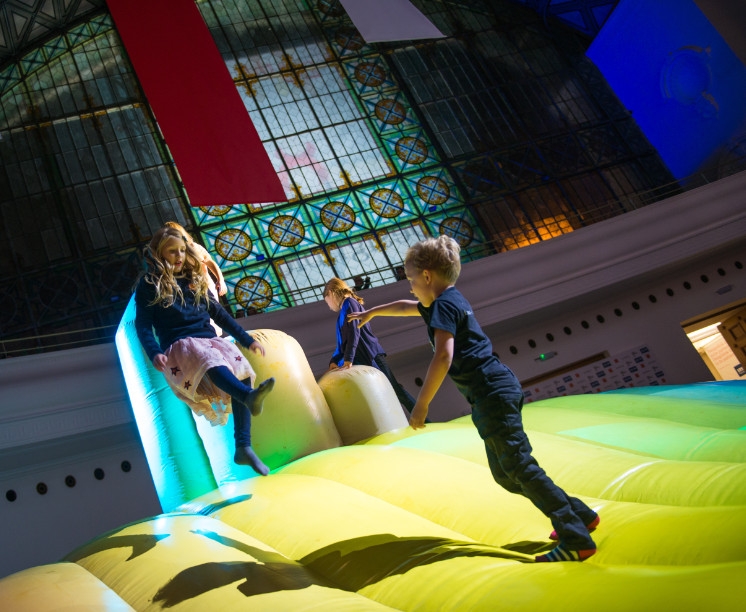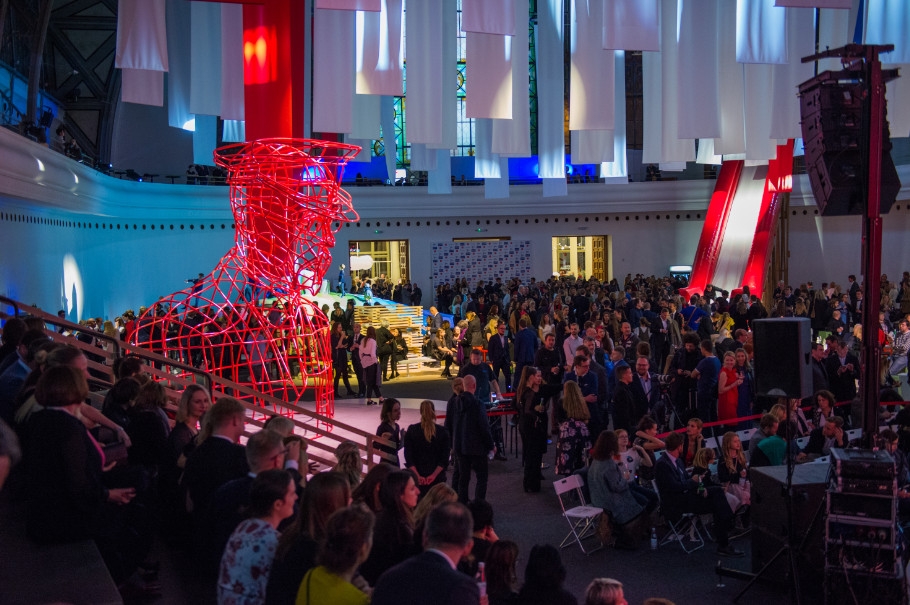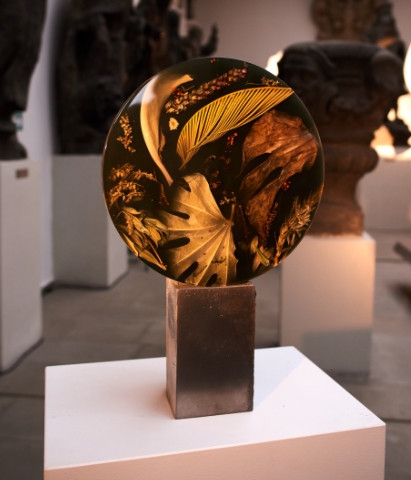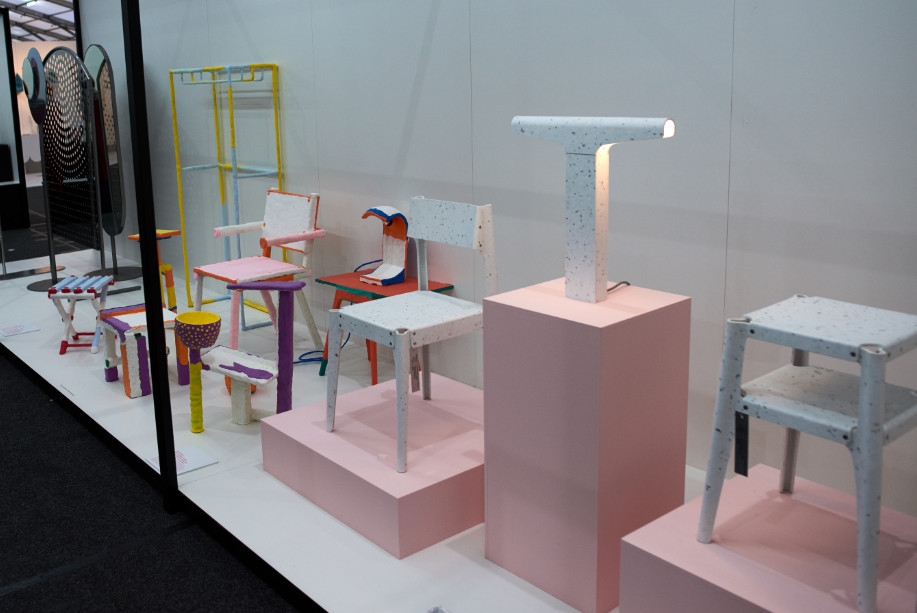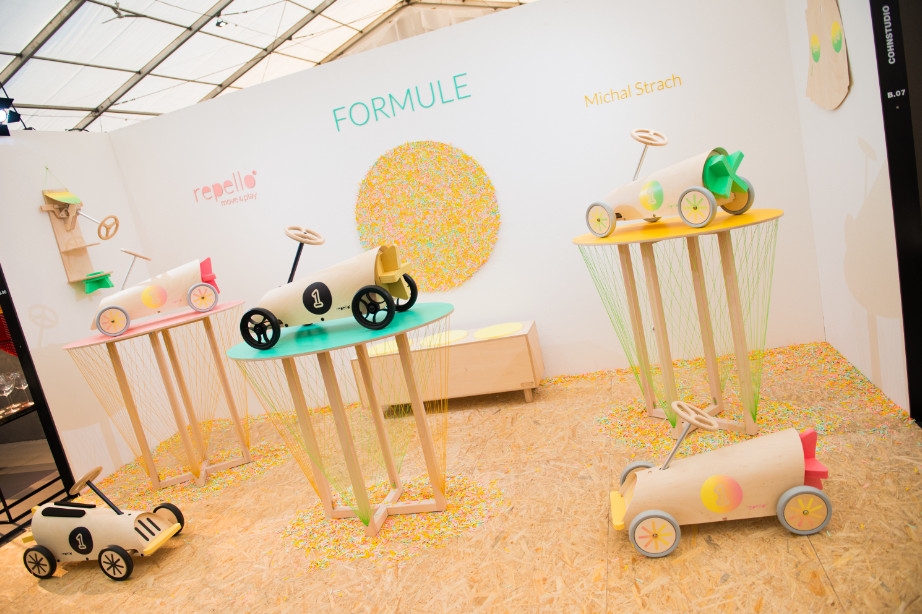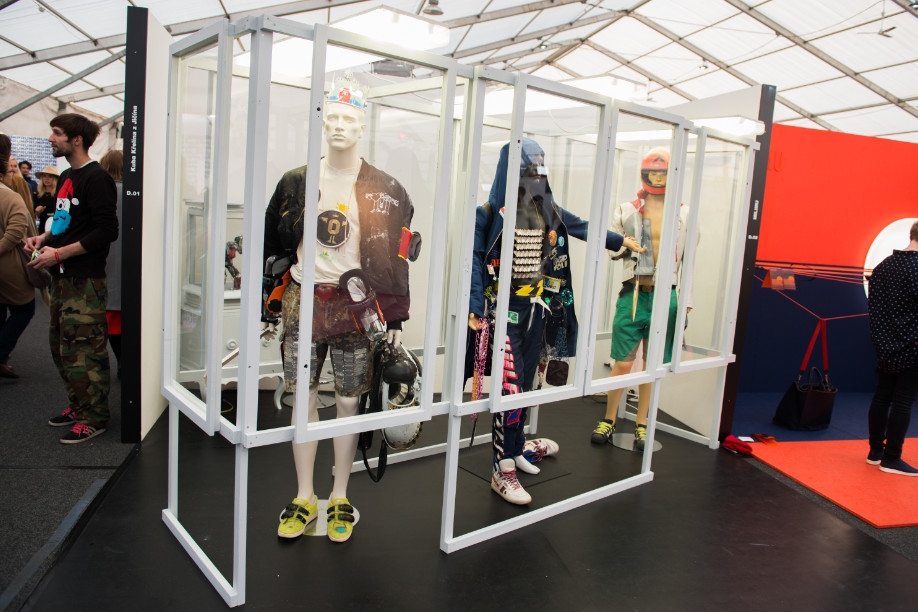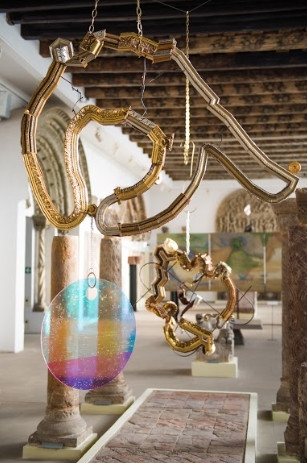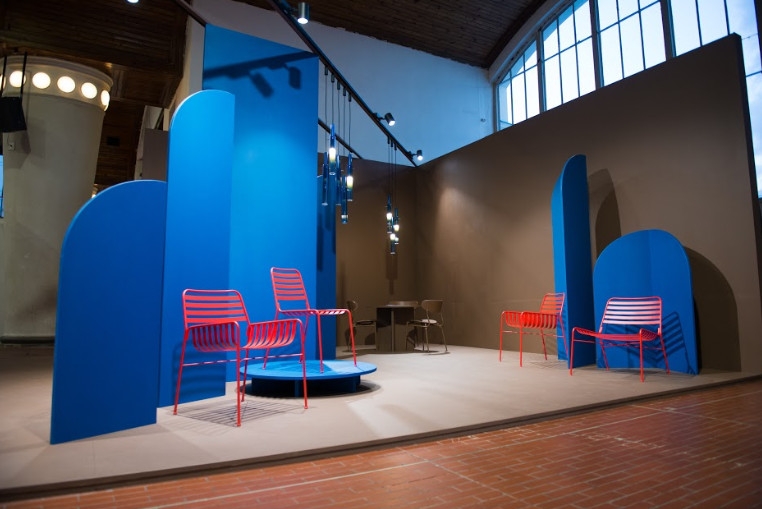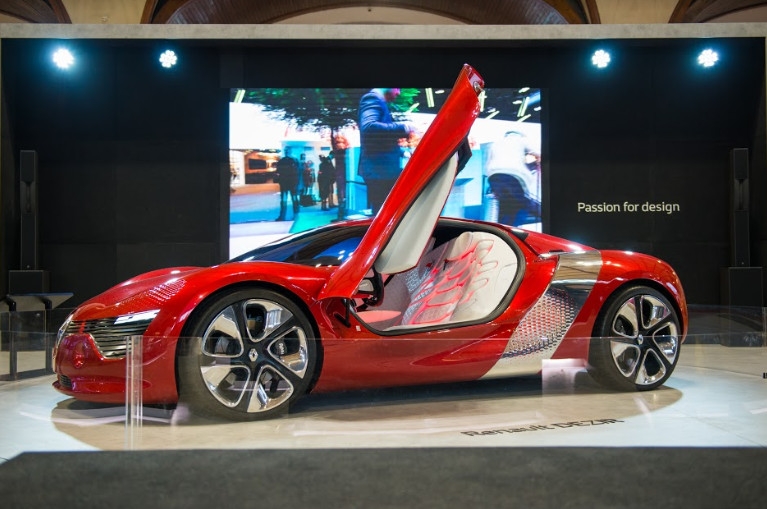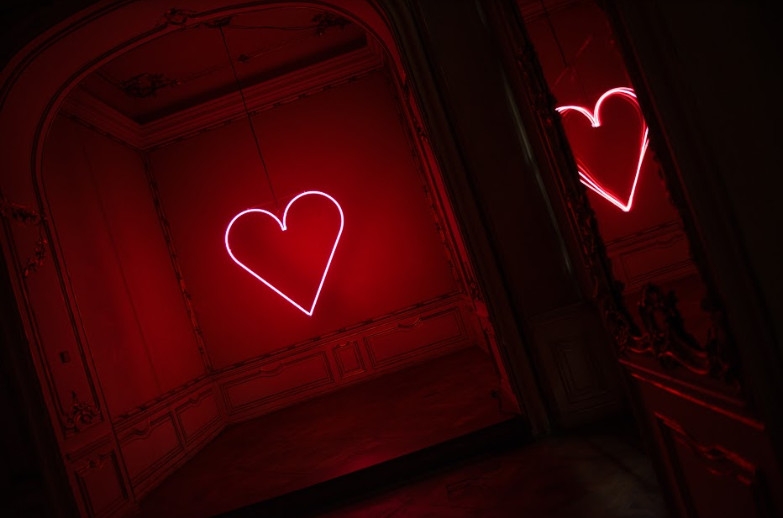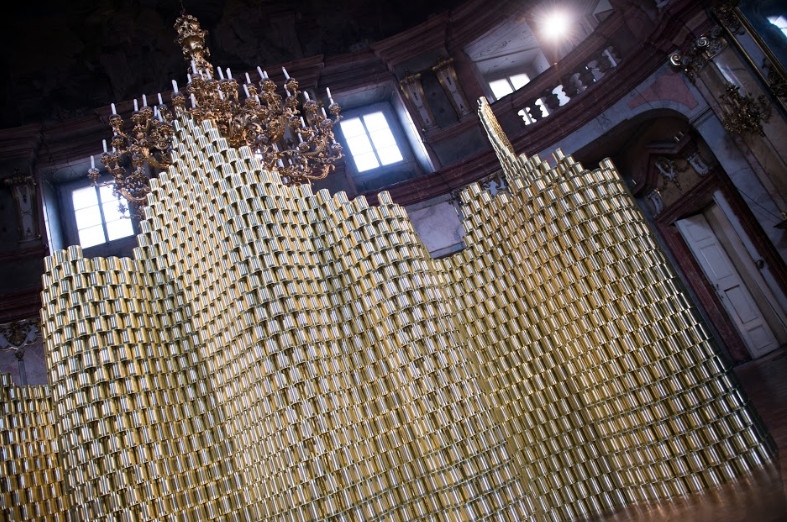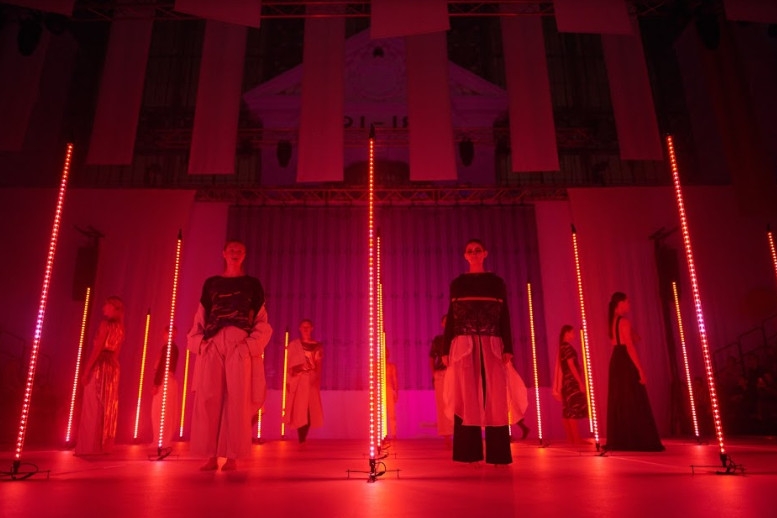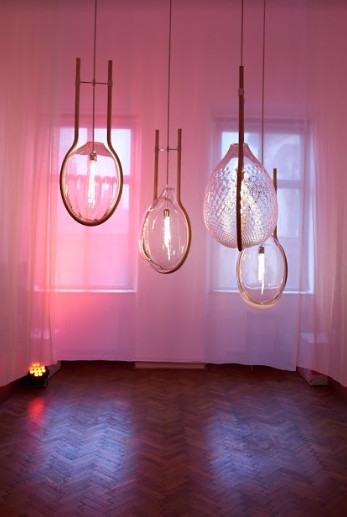The 20thAnnual Designblok – A Magnificent Celebration of Czech Design
13. 11. 2018
The Prague International Design Festival, Designblok, is the most extensive Central-European exhibition exclusively focusing on design and fashion. This year, it was participated by the record-breaking number of 343 brands, designers, studios, artists and schools from 12 countries. It was held on the premises of the Exhibition Grounds in the Prague district of Holešovice from 25 to 29 October 2018, while the duration of its Manifest exhibition was prolonged to 4 November 2018. During the five days when it was opened, Designblok welcomed tens of thousands of visitors, offering not only the vast crucial display but also a three-day marathon of fashion shows, discussions and lectures given by Czech and foreign guests as well as a program for children.
What, then, did this year’s Designblok bring to its audiences?
The subject of the 20thDesignblok was Celebration. It was selected to symbolize the 20thjubilee of the event and, simultaneously, the 100 years from the establishment of Czechoslovakia, while the latter anniversary has been soundly resonating not only throughout the local cultural scene. The two anniversaries thus determined the subject focus and the dramaturgy of the most extensive Central-European festival of design and fashion.
“The heart of the jubilee year was Designerie – a landscape made to enjoying, experiencing and plaing; a universe of imagination in the spirit of the main subject, CELEBRATION. It was designed by the architect Jan Rosický from the studioA69, who had also creatively transformed spaces throughout Prague. After Grandhotel Evropa, the Neptun botel and the Žižkov Goods Station, he determined the looks of the festive Designerie. The bunting, the circular stage, the President Masaryk, the inflatable Říp mountain, the giant slide, and the interactive installation, aimed at both children and adults, were situated in the very heart of Designblok,” the Designblok director, Jana Zielinski, described.
“I am happy that Masaryk could – at least symbolically – participate in our 20thjubilee event. He not only embodies the utmost dignified way of performing the presidential role, but also was a great supporter of Czech design which, under his rule, became a symbol of the nascent young, progressive country.”Jana Zielinski for Reflex.cz
Stats
In 2018, the 20thyear of the most extensive festival of design and fashion in Central Europe again welcomed visitors in the Praha-Holešovice Exhibition Grounds, which housed the Superstudio, Openstudio and the Art House, and, in addition, in the Colloredo-Mansfeld Palace which opened its door to the Manifest profile exhibition. For the third time, we also presented the adventure interactive landscape, Designerie, in the central hall of the Industrial Palace, which visually introduced to the Designblok’s central subject. Besides the spaces at the Exhibition Grounds – where the Industrial Palace, the piazzetta in front of the Palace and the Lapidarium of the National Museum accommodated more than 14,000 m2 of exhibitions –, there also opened a wide array of galleries, pop-up shops and showrooms throughout Prague, such as the cultural pop-up Canapé by SOFFA at the U Obecního dvora site, the Gallery of the Czech Centers, presenting the exhibition MINI WONDERS, and the Deelive creative gallery in the heart of Prague, displaying works by dozens of designers.
In the course of five days, the Holešovice Exhibition Grounds and the Colloredo-Mansfeld Palace welcomed the total of 41,834 visitors: 27,223 adults, 10,891 students, seniors and persons with severe health disabilities, and 3,720children up to 15 years of age. The overall Designblok attendance, including the sites outside the Exhibition Grounds, was more than 50,550 visitors.
The Superstudio, occupying the right wing of the Industrial Palace, housed the displays of 80 producers, distributors, companies and media titles. Visitors to the Art House could inspect 20 art projects, and the Openstudio introduced to 148 presentations by a wide range of designers and designer’s and school studios. This year’s Diploma Selection competition offered interesting installations as well; it encompassed 15 product designers who held their group exhibitions in the Openstudio, and 15 fashion designers who flashed their collections on the central catwalk. On top of this, Designblok offered an array of installations and exhibitions on 38 sites throughout Prague. All in all, the event provided space to designers from Belgium, Austria, Bulgaria, the Netherlands, Norway, Poland, Germany, Slovakia, France, Switzerland, Great Britain and, naturally, the Czech Republic.
“This year’s Designblok was a dignified celebration of its 20thanniversary, and it was mainly so thanks to the breathtaking Manifest exhibition held in the Colloredo-Mansfeld Palace, the participation of outstanding guests from abroad and the rich accompanying program, including the distinctively conceived fashion shows. The companies’ and designers’ presentations were, in general, of a good quality without any surprising deviations in either positive or negative way. To me, the imaginary symbol of this year was the chair Chips, designed by Lucie Koldová for Ton.”
Tereza Kozlová, journalist and publicist
The Designblok Places
The Designblok main space in 2018 was the Exhibition Grounds in the Prague district of Holešovice. Besides the building of the Industrial Palace, it also offered unique exhibitions in the National Museum’s Lapidarium (Stone Collection) and the outside piazzetta.
The Superstudio was situated in the right wing of the Art Nouveau building of the Industrial Palace. The architecture of Jan Rosický introduced visitors to the most recent exploits from the fields of furniture, lighting objects and home accessories by both local and foreign prestigious brands and manufacturers. The traditional Czech brand, Brokis, exhibited its new collection of lights designed by its art director, Lucie Koldová; the installation prepared by Ravak attracted attention with its SOLOsolitaire bathtub; Vitra introduced its Tool-Stoolby Konstantin Grcic to the Czech public for the first time, and the car producer, Renault – the main partner of the project – presented its most recent concept, DeZir.
The Openstudio, inhabiting the left wing of the Industrial Palace, became a space for displaying works by 148 designers and designer’s studios from many European countries. Here, visitors could mainly inspect prototypes and products born outside the background of commercial producers. Openstudio moreover offered an overview of the best diploma works by designers from 12 European countries in the framework of the Diploma Selection competition. In addition, its part was the discussion platform, Reflex Stage, open to individual lectures given by designers and participants from abroad and discussion blocks held by the Reflex magazine, presenting interesting guests.
Following the last year’s success, our audience could this year, too, visit the Designerie – a landscape of adventures, situated in the central hall and offering interactive installations created by Czech designers specifically for Designblok. The space, designed by architect Jan Rosický, housed an opulent bunting, a children’s jumping castle shaped after the Czech iconic mountain, Říp, a sculpture-head of the First Czechoslovak President, Tomáš Garrigue Masaryk, by Maxim Velčovský in the form of a climbing frame, and a giant inflatable slide. There also was a café where visitors could rest on the Stool-Toolmost recent item by Vitra to draw new energy prior to their further design journeying. The heart of Designerie was the Garden Stage, presenting live accompanying program, including 32 fashion shows and a lecture given by the star of this year’s Designblok, Jaime Hayon.
The Art House opened for the sixth time this year and offered 22 exhibition concepts by renowned Czech and foreign designers and artists in the interaction with the unique space of the Lapidarium. The Art House concept was, along with the Designblok curators, entrusted to the Editor-in-Chief of the Dolce Vita magazine, Danica Kovářová.
The Manifest exhibition offered installations by 20 Czech and foreign designers who did their best to mediate their own approaches to design and the role of a designer. Their installations were specifically created for the unique space of the Colloredo-Mansfeld Palace and were open to public as long as to 4 November, i.e. outside the Designblok duration.
The program was moreover joined by countless Prague galleries, showrooms and concept stores which premiered their products and presented their events in their own spaces.
The Subject
Every year, Designblok comes forward with a specific main subject which intersects the entire event and serves as the main motif of many presented installations. Following the Icons, Childhood, Freedom, Sport and Food, the organizers decided that the 2018 Designblok would unwind under the subject Celebration, simultaneously commemorating the 20thanniversary of the event and the 100thanniversary of the establishment of Czechoslovakia. The Designblok creative director, Jiří Macek, explains: “Designblok celebrated 20 years of its existence and the Czech Republic celebrated the 100thanniversary of the establishment of an independent state. We love design, and we highly appreciate that it has increasingly been thriving in our country. We have devoted two decades to promoting it, to incorporating Czech designers into the relevant international scene, and to establishing contacts between the artists and the industry. This year, we wanted to celebrate Czech design and its today’s quality. But we also know that we are, in fact, still in the beginning. This year’s Designblok thus documented our faith in the positive future of our country.”
The main subject could also be spotted throughout the accompanying visual materials, capturing a couple of cyclists on a single bike, which fuses the symbolic of a constant move forward, the determination and the necessity of empathy and mutual understanding, but also the joy of ride, often enriched with acrobatic feats. “If it was not for the easiness and joy, our ride would be stripped of motivation; if it was not for the strong team and solid background, we would be done after few kilometers. All in all – albeit it may sound too serious – the 20 years of the Designblok existence have been a ride which we keep cherishing and a driving force which helps us constantly move forward,”the Designblok creative director, Jiří Macek, adds. The photographs for the visual materials, which gradually revealed a couple of sportsmen, were shot by Salim Issa, while the graphic design is the work of Martina Černá from the Imagery studio.
Guests from Abroad
Invitation to the 20thDesignblok was accepted by many outstanding foreign figures – and especially this year’s main guest, Jaime Hayon, who presented an overview of his hitherto oeuvre at the Manifest exhibition held in the Colloredo-Mansfeld Palace.
The historical palace also introduced Ineke Hans, the star of the Netherlandish design, whose work is characteristic of distinctive morphology based on folk traditions. The Manifest included the world premiere of her most recent feat, executed for the Czech brand Křehký, with which she had collaborated in the past. The French designer, Marléne Huissoud, whose oeuvre is inspired by the processes and life cycles of insects, introduced her collection of earthenware objects. The Austrian duo, chmara.rosinke, naturally could not be missing at the Celebration and the same is valid for the Spanish designer, Jorge Penadés, who had previously been acknowledged by the Designblok Diploma Selection award.
Jana Zielinski, the Designblok director, explains: “This year’s participation of foreign top designers was very impressive. The support provided by the 20thDesignblok sponsors allowed us to celebrate via the aspect which we view as the most important, and that it incorporating Czech design into international context. Our ultimate stars in 2018 definitely were Jaime Hayon, Ineke Hans and Jacopo Foggini. However, we also have not ceased keeping an eye on the arriving generation of designers and are happy to see the Diploma Selection winners transforming into artists being increasingly acknowledged by the global scene.”
The Art House, situated in the National Museum’s Lapidarium, continued exploring the topical potential of design in the sense of art forms and their fusions with contemporary art scene. The curator Danica Kovářová, the Editor-in-Chief of the Dolce Vitamagazine, and the Designblok chief curators Jana Zielinski and Jiří Macek presented a selection of artists of several generations as well as various creative points of departure and methods from both the Czech lands and Europe. The most recent projects by the stars of the international scene – Matteo Cibic, Philippe Cramerand Marcin Rusak– were displayed next to innovative works by the arriving generation of artists. These especially were the captivating project of a new dining concept by Anna Bera, the textile painting by Aneta Dvořákováand the sumptuous glassmaking homage to cycling by GlassBrothers. Visitors, in the interaction with sculptures and fragments of architecture, could also enjoy the projects produced by the fixed stars of Czech design, such as Jiří Pelcl, LiběnaRochová, Rony Plesland Jiří Šuhájek.
The Diploma Selection 2018
Designblok in 2018 for the fifth time worked with the EUNIC Cluster the Czech Republic to introduce the international competition of diploma works – the Diploma Selection – which offered works by the most talented European diploma students. This year, it accepted 109 calls from the graduates from 22 prestigious European universities. The final selection eventually presented 15 product designers and 15 fashion designers. The finalists originated from 12 European countries, including the Netherlands, Switzerland, Belgium, Poland, Germany and Great Britain. Moreover, six works by young designers from the Czech Republic were selected for the competition.
The finalists of the product design section introduced themselves via exhibitions in the Openstudio. These, for instance, included producible bio packaging, furniture of recyclable material and a sofa set on the subject of depression. The fashion collections were presented in the spaces of the Garden Stage, in the central hall of the Industrial Palace. The total number of 15 fashion designers flared their most recent collections. Openstudio also hosted the last year’s winner, Anna Banout, who in 2017 succeeded with her project Syria 2087– a series of objects interconnecting stories from Syria and Mars.
The winners of the two sections were selected by an international jury composed of distinguished curators, gallery owners and journalists. The winning project from among the 15 diplomas in the field of product design became the Substantialby the Netherlandish Alexander Schulwho devoted his career to pursuing the importance of design from the aspect of protecting sources and recycling. The winner from the group of 15 fashion designers was Ramona Salo Myrseth with her collection I Am Not the Grass in Your Boots, inspired by the land of Sápmi. The winners received the financial support of EURO 1,000 to develop their new collections and material prizes from T-Mobile. In addition, they were given the chance of introducing their new collections at the next year’s Designblok – equally as the 2017 winners could present their work this year, and thus could document the progress in their work to not only visitors, but also the jury.
The jury members of the Diploma Selection 2018 product design section were the following:
Juliet Kinchin, design curator, New York; Lina Kanafani, curator and gallery owner, MINT shop, London; Rossana Orlandi, gallery owner, Spazio Rossana Orlandi, Milan; Tulga Beyerle, Director, Museum of Decorative Arts Dresden-Pilnitz; Agnieszka Jacobson, School of Form, Poznań; François Leblanc, gallery owner, Gallery S. Bensimon, Paris; Gilles Massé, Wallpaper Store, Milan; Cok de Rooy, curator and gallery owner, Frozen Fountain, Amsterdam; Adam Štěch, curator and design theoretician, Okolo (CZ); Hans Stefan Moritsch, designer and program director at the New Design University (AT); Stephan Hamel, design consultant and brand development advisor (IT); Maria Critstina Didero, curator and author (IT); Ineke Hans, designer and founder of the Ineke Hans
The jury members of the Diploma Selection 2018 fashion section were the following:
Natasha Binar, fashion theoretician (DE); Esther Sternkopf, Creative Director, ELLE PL, Warsaw; Noémie Schwaller, Editor-in-Chief, DASH Magazine (UK); Andrea Běhounková, Editor-in-Chief, Vogue (CZ); Danica Kovářová, Editor-in-Chief, Dolce Vita (CZ); Veronika Ruppert, journalist and editor, Modeschau, Radio Wave (CZ); Jan Králíček, journalist and fashion consultant, Vogue (CZ); Petr Matějček, Editor-in-Chief, ELLE (CZ)
Accompanying Program
The 20thDesignblok decided to lean against a rich accompanying program. It was simultaneously held at several places but mainly in the thematic Garden Stage’s Designerie, abundantly decorated with bunting, which represented the midpoint of all events. It hosted 32 fashion shows presented by both local and foreign designers, the lecture given by Jaime Hayon and the gala evenings of the Designblok and the Diploma Selection Awards. The generous space of the central hall, the variability of the stage, the café, the inflatable jumping Říp mountain, the giant slide as well as the wide selection of programs turned the Garden Stage into a place eagerly visited by both adults and children.
A no less animated center of events was brought to the Openstudio by the Reflex Stage discussion platform. Its lectures provided the opportunity to encounter not only the Designblok foreign guests, but also Czech designers who introduced audience to their respective oeuvres. The two platforms – the central Garden Stage and the discussion Reflex Stage – offered rich program during each and every Designblok day.
A Charity Project
Apart from acknowledging the most successful projects, Designblok annually supports selected charity projects. This year, it was the Debra organization, which helps patients suffering from the genetic condition called Epidermolysis bullosa (EB). The designer Liběna Rochová cooperated with the artist Musa on a special collection NADOTEK for Debra, which premiered on the catwalk on Friday, 26 October. At the closing of the fashion show, the Designblok directors handed over a CZK 100,000 check in order to support the Debra Czech Republic foundation. The particular fashion items also were available for purchasing in the Superstudio in the right wing of the Industrial Palace.
